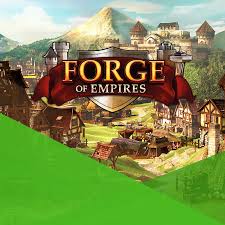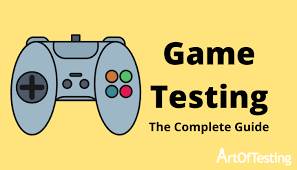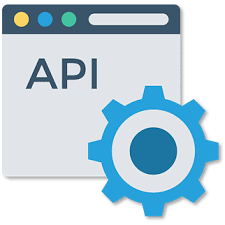AIn today’s world, mobile gaming has emerged as a fundamental aspect of entertainment, captivating people who often find themselves engrossed in their favourite games on smartphones for hours on end. If you’re someone with a passion for gaming, you might be curious about how to design a mobile game that could capture the hearts of millions. Although it may seem like an overwhelming endeavour at first glance, the journey of creating a mobile game can be incredibly fulfilling, offering both financial rewards and personal gratification. This article will guide you through the crucial steps needed to embark on this creative venture.

Is Crafting A Mobile Game An Easy Feat?
The answer is not straightforward. The level of difficulty varies based on several elements, including the game’s intricacy, the tools employed for development, and the expertise of those involved in creating it. On one side, there are numerous engines and platforms available that cater to different needs and skill levels, making it easier for novices to dive into game development. These resources often come equipped with ready-made assets and templates that can be tailored to forge something genuinely original. Many also include features designed to simplify aspects like debugging and testing.
Conversely, developing a mobile game can present significant challenges—especially if your project involves intricate gameplay mechanics or demands high-quality visuals and audio. Additionally, you’ll need to consider how your game will perform across various platforms and ensure that it provides an engaging experience for players.
Essential Steps to Create Your Own Mobile Game
Embarking on the journey of mobile game development can be an exciting adventure. Let’s walk you through the essential steps to bring your vision to life.
Step 1: Conceptualize Your Game Idea
Before diving into development, it’s’ crucial to have a solid concept for your mobile game. Your idea should stand out, provide entertainment, and present enough challenges to captivate players. Begin by brainstorming various game concepts—write down every idea that comes to mind. Once you have a comprehensive list, filter it down to three standout ideas that show the most significant promise. Research these options to assess their feasibility and market interest.
Here are some strategies for honing your game concept:

– Identify Your Audience: Consider who will play your game. Are they casual gamers, dedicated enthusiasts, children, adults, or a specific group? Understanding your audience is critical in shaping the gameplay mechanics, visuals, and narrative elements that will resonate with them.
– Explore Gameplay Mechanics: What actions will players engage in? Will your game feature puzzles, action sequences, or simulations? Aim for an innovative gameplay mechanic that distinguishes your creation from others in its genre.
– Envision the Visuals: Picture how your game will appear. Contemplate the graphics and art style—will it be 2D or 3D? Will there be a cohesive theme throughout or will it evolve with different levels or narratives?
– Craft the Storyline and Characters: Decide on the nature of your story—will it follow a linear path or offer multiple choices? Will it rely on text or feature cinematic elements? Think about the characters involved—who are they and how do they interact with players?
– Determine Your Monetization Strategy: Reflect on how you’ll’ generate revenue from your game. Will you implement a one-time purchase model for downloads or utilize in-app purchases and advertisements as income sources?
With these foundational steps laid out, you’re well on your way to developing an engaging mobile game!
Step 2: Select a Game Engine
Now that you’re on your way to creating a mobile game, the next crucial step is selecting the right game engine. Think of a game engine as the backbone of your project; it’s software designed to equip developers with the necessary tools and resources for game creation. With numerous options on the market, popular choices like Unity, Unreal Engine, and GameMaker Studio often come to mind. Each of these engines has its unique advantages and disadvantages, so taking time to investigate them is vital in finding one that aligns with your game’s vision.
When considering which engine to choose, start by reflecting on your game’s specific needs. For instance, if you envision intricate 3D graphics in your gameplay, you’ll want an engine renowned for its advanced rendering capabilities.

Next is usability, which is especially important if you’re new to development. You don’t want to waste precious hours grappling with complicated software when user-friendly options are available.
Another aspect worth exploring is the community surrounding each engine. A vibrant and supportive community can be invaluable when you run into obstacles during development; their insights can help you navigate challenges more smoothly.
Additionally, consider cross-platform compatibility. If you plan to launch your game on various platforms, the engines must support this functionality without hassle.
Don’t overlook licensing. Different engines have different terms—some may require subscriptions or fees, while others might be open-source. It’s crucial to find one that comfortably fits your budget and project requirements.
Finally, before committing fully to an engine, take it for a test drive! Many offer free trial versions or demos, allowing you to explore their features firsthand. This exploration will not only help clarify whether the engine meets your expectations but also ensure it’s a worthy investment for its creative endeavour.
Step 3: Crafting the Visuals
Once you’ve settled on a game design, it’s time to dive into the critical process of developing your game’s visuals. This phase involves the design of characters, backgrounds, user interfaces, and levels. Depending on the style of mobile game you’re aiming to create, you can use either 2D or 3D graphics. It’s crucial to design a visually captivating experience that draws players in and keeps them engaged.
As you embark on this artistic journey, consider these important guidelines:
1. Maintain Consistency: Ensure that your art style remains uniform throughout the game. A cohesive visual experience enhances player immersion and enjoyment.
2. Leverage Color Wisely: Color is a potent element in game design; use it strategically to direct players’ attention, emphasize players ‘ features, and establish an overall mood or ambience.
3. Embrace Simplicity: Given the limited screen space on mobile devices, prioritize clarity in your graphics. Avoid overcrowding with excessive details that could confuse players.

4. Optimize for Performance: Since mobile devices have finite resources, it’s essential to fine-tune yit’srgraphics for optimal performance. Techniques like texture compression can help ensure smooth gameplay.
5. Minimize File Sizes: Be mindful of file sizes as many mobile users may be on restricted data plans; keeping files compact is beneficial.
6. Design an Intuitive User Interface: Your visuals should be aesthetically pleasing and functional. Ensure that your user interface is straightforward and user-friendly for seamless interaction.
By following these principles as you develop your game’s graphics, you’ll creatgame’sngaging andyou’llable experience for players.
Step 4: Code the Game
Coding is the process of creating the game’s logic using programming. If you are not a programmer, you can hire a programmer to code your game. The coding process can take a long time, depending on the complexity of the game. You can speed up the coding process by using pre-built code libraries or hiring a professional developer. Here are some essential mobile game coding tips for you:
Break down your game into smaller pieces. Mobile games can be complex, so it’s essential to break your items down into smaller, manageable chunks. This can help you avoid writing monolithic code that is difficult to maintain, and it can make it easier to test individual components of your game.
Test your code thoroughly. Testing is critical for any software project, but it’s essential for mobile games. Make sure to test your code thoroughly to ensure that it works as expected on a variety of devices and platforms.

Keep your code organized. Good code organization is critical for any software project, and mobile games are no exception. Make sure your code is organized, modular, and easy to read. This can help you avoid confusion and make it easier to maintain your code over time.
Be open to feedback and iteration. Mobile game development is an iterative process, and it’s essential to be open to feedback from users and other stakeholders. Use this feedback to refine your game mechanics and code, and continue to iterate until you achieve the desired result.
Step 5: Strategizing for Player Support After Launch
Once a mobile game is released, ensuring that players feel supported is vital to keeping them happy and securing the game’s future. With audiencgamening the globe, it becomes imperative to establish a robust and agile support system that can swiftly address player concerns. Here’s a detailed strategy Here’spst-launch assistance, emphasizing contemporary technologies and adaptable solutions.
Integrating Support Software. A well-crafted self-service knowledge base can empower players to troubleshoot common issues on their own. This not only lightens the burden on support teams but also enhances response times, allowing players to find solutions quickly.
Utilizing AI Chatbots. Incorporating AI-driven chatbots into your support framework is vital for scalable assistance. These intelligent bots can efficiently manage a variety of routine inquiries from players—whether they’re seeking help with athey’rerecovery, facing technical difficulties, or looking for game tutorials—delivering prompt and precise answers.

Providing Multilingual Assistance. Given that mobile games attract diverse audiences worldwide, offering multilingual support becomes essential. By utilizing AI translation tools alongside human agents proficient in various languages, you can ensure personalized help for players who may need to learn to speak English.
Facilitating Cross-Platform and In-App Support. To enhance the player experience and reduce any potential barriers, it’s crucial to provide croit’s-latform and in-app support options. Players should be able to reach out for assistance directly within the game environment without needing to exit the application.
This comprehensive approach ensures that players receive timely help while fostering a positive gaming experience long after launch.
Step 6: Product Testing
The sixth step in the process is product testing, a crucial phase dedicated to verifying that your game operates seamlessly without any bugs or glitches. You have the option to conduct the tests yourself or enlist a team of beta testers to do the job for you. Gathering feedback from these testers is vital for refining your game prior to its release. Here are some suggestions we offer for effective game testing:
First and foremost, it’s essential to test your across a range of devices. Mobile games can perform differently depending on the device used, so experimenting with various screen sizes, resolutions, and processing capabilities is vital. This approach will help you uncover any device-specific issues that might crop up.
Next, consider testing under various scenarios. For instance, observe how the game functions when the battery levels are low or when other applications are running simultaneously in the background. This will provide insight into how stable and responsive your game remains in diverse environments.
User experience plays a significant role in a mobile game’s success; therefore, git is essential for evaluating how enjoyable the game is to play. During your testing sessions, focus on aspects like control responsiveness and overall user interface design.
Compatibility checks are also critical—make sure to run tests on different operating system versions and confirm that your game works well across multiple devices. This will help you spot any compatibility hurdles that could hinder access for some players.

Additionally, thorough crash testing is imperative. Watch for freezes or crashes while playing, note error messages or warnings that arise, and attempt to replicate these issues so you can pinpoint their origins.
Finally, performance matters greatly since mobile games can demand considerable resources. Assess factors such as frame rates, loading times, and memory consumption to ensure smooth gameplay across different devices.
By diligently following these recommendations during product testing, you’ll be well-equipped to ensure your game’s quality before it reaches players.
Step 7: Launching The Game
Once you’ve crafted your mobile, you’ve the next exciting phase is its launch. You have a variety of platforms at your disposal for submission, such as the Apple App Store, Google Play Store, and Amazon Appstore. Here’s how to ensure your gHere’smkes a triumphant debut:
Start with some research. Before hitting that upload button, dive into understanding the app stores where you intend to publish. Familiarise yourself with their specific submission protocols, policies, and requirements; this knowledge will shield you from potential setbacks or outright rejections.
Next is asset preparation. Gather all essential materials for your game, including icons, screenshots, and promotional content. Ensure these assets are of high quality and visually striking; they play a crucial role in enticing potential players.

Then comes the selection of categories and keywords. This step is vital for enhancing your game’s visibility and attracting the right audience. Choose categories that fit well with your game’s theme and utilize kegames that accurately reflect what you offer.
Lastly, remember to keep your game updated regularly. Continuous improvements—whether fixing bugs or introducing new features—will not only engage existing players but also draw in newcomers eager for fresh content.
By following these steps diligently, you’ll set the stage for a successful launch of your mobile game!
What’s the Price Tag for Designing a Mobile Game?
The expense involved in creating a mobile game can fluctuate significantly based on several key elements: the complexity of the game, the platforms it will support, the geographical location of your development team, and the extent of design and features required.
To break it down further, here are some specific costs associated with mobile game development:

1. Development Team: This covers the salaries or fees for developers, designers, testers, and various other professionals who contribute to bringing your vision to life.
2. Platform Compatibility: You’ll need to factor in the costs related to developing for different operating systems, such as iOS and Android—or both.
3. Game Engine: If you choose to utilize a game engine such as Unity, Unreal Engine, or GameMaker Studio, there may be associated costs. While these tools can streamline development processes, they often come with their fees.
4. Graphics and Sound Design: This includes expenses related to creating visual assets and audio elements, such as character designs, animations, music tracks, and sound effects.
5. Marketing and Distribution: Once your game is ready for launch, you’ll want to invest in you’ll efforts to promote it and ensure its availability in app stores. The budget for this can vary greatly depending on how well-known you want your game to become and who your target audience is.
In summary, developing a mobile game can cost from a few thousand dollars to millions. Understanding your game’s specific features and requirements will help you estimate a more accurate budget for its creation.
How Maxthon Optimizes Mobile Game Development
1. User-Centric Design: Start by leveraging Maxthon’s user-centric desiMaxthon’ses. Its interface allows you to create intuitive navigation and graphics that enhance the player experience.
2. Cross-Platform Compatibility: Maxthon can seamlessly integrate with various operating systems. This ensures your game runs smoothly on both iOS and Android devices, broadening your audience’s reach.
3. Performance Optimization Tools: Implement Maxthon’s performance optimization tools. These tools help minimize lag and improve load times, leading to a smoother gameplay experience.
4. Community Engagement Features: Take advantage of the built-in community engagement options within Maxthon. Facilitating forums or chat functions can keep players engaged while providing valuable feedback for further improvements.
5. Resource Management: Use Maxthon’s resource managemeMaxthon’sblities to optimize graphics and sound files efficiently, ensuring that your game does not consume excessive battery or data.
6. Testing Capabilities: Leverage comprehensive testing features integrated into the platform for debugging and adjusting performance metrics prior to launch. Thorough testing helps identify potential issues early in development.
7. Data Analytics Integration: Integrate Maxthon’s analytics tools with Maxthon’s player behaviour and preferences. This data is crucial for making informed decisions about updates and new features.
8. Cloud Services Support: Consider utilizing cloud services offered by Maxthon for storage solutions. These can streamline content delivery and enhance overall game performance through faster access times.

9. Security Protocols: Finally, prioritize security with the robust measures provided by Maxthon to protect user data and ensure safe transactions within your mobile gaming environment.
By following these steps, you can effectively utilize Maxthon to optimize every aspect of mobile game development.

